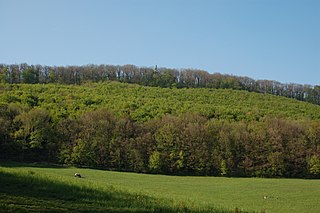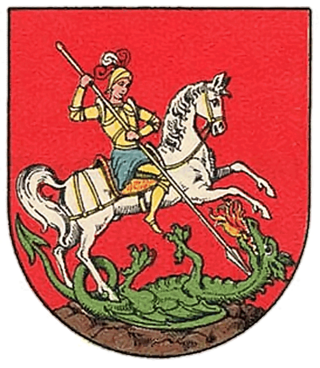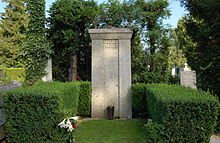
The Hermannskogel is a hill in Döbling, the 19th district of Vienna. At 542 metres above sea level, it is the highest natural point of Vienna. It lies on the border to Lower Austria.

Josefstadt is the eighth district of Vienna. It is near the center of Vienna and was established as a district in 1850, but borders changed later. Josefstadt is a heavily populated urban area with many workers and residential homes. It has a population of 24,279 people (2014). With an area of 1.08 km2, Josefstadt is the smallest district in Vienna, and was named after the Holy Roman Emperor Joseph I.

Floridsdorf is the 21st district of Vienna, located in the northern part of the city and comprising seven formerly independent communities: Floridsdorf, Donaufeld, Greater Jedlersdorf, Jedlesee, Leopoldau, Stammersdorf, and Strebersdorf.

The Kahlenberg is a mountain located in the 19th District of Vienna, Austria (Döbling).

Hernals is the 17th district of Vienna, Austria . Hernals is in northwest Vienna. It was annexed in 1892 out of the townships of Hernals, Dornbach, and Neuwaldegg.

Döbling is the 19th district in the city of Vienna, Austria. It is located in the north of Vienna, north of the districts Alsergrund and Währing. Döbling has some heavily populated urban areas with many residential buildings, and borders the Vienna Woods. It includes some of the most expensive residential areas such as Grinzing, Sievering, and Neustift am Walde, and is home to many Heurigen taverns. There are some large Gemeindebauten, including Vienna's most famous, the Karl-Marx-Hof.

Ottakring is the 16th District in the city of Vienna, Austria. It is located west of the central districts, north of Penzing and south of Hernals. Ottakring has some heavily populated urban areas with many residential buildings. It was formed from the independent villages of Ottakring and Neulerchenfeld in 1892.

Heiligenstadt was an independent municipality until 1892 and is today a part of Döbling, the 19th district of Vienna, Austria.

Kahlenbergerdorf was an independent municipality until 1892 and is today a part of Döbling, the 19th district of Vienna. It is also one of the 89 Katastralgemeinden.

Sievering is a suburb of Vienna and part of Döbling, the 19th district of Vienna. Sievering was created in 1892 out of the two erstwhile independent suburbs Untersievering and Obersievering. These still exist as Katastralgemeinden.

Nussdorf was a separate municipality until 1892 and is today a suburb of Vienna in the 19th district of Döbling.

Salmannsdorf is a part of Döbling, the 19th district of Vienna.

Oberdöbling was an independent municipality until 1892 and is today a part of Döbling, the 19th district of Vienna. It is also one of the 89 Katastralgemeinden.

Unterdöbling was an independent municipality until 1892 and is today a part of Döbling, the 19th district of Vienna. It is also one of the 89 Katastralgemeinden.

Josefsdorf was an independent municipality until 1892 and is today a part of Döbling, the 19th district of Vienna. It is also one of the 89 Katastralgemeinden.

Until 1892, Neustift am Walde was an independent municipality on the outskirts of Vienna, Austria. Today it is part of Döbling, the 19th district of Vienna. It is also one of the 89 Katastralgemeinden.

The Döbling Cemetery is a cemetery in the 19th district of Döbling in Vienna, Austria.

The Parish Church St. Michael's is a Roman Catholic parish church in the suburb of Heiligenstadt in the 19th district of Vienna, Döbling. It is dedicated to the Archangel Michael.

St. James's Church is one of two Roman Catholic churches in the parish of Heiligenstadt in the 19th district of Vienna, Döbling. It stands at the Pfarrplatz and is dedicated to James, son of Zebedee.

The Grinzing Parish Church is the Roman Catholic parish church of Grinzing in the 19th district of Döbling, western Vienna, Austria.


























